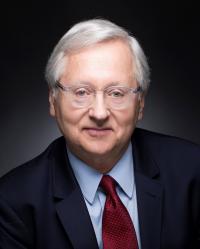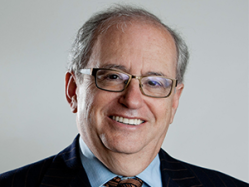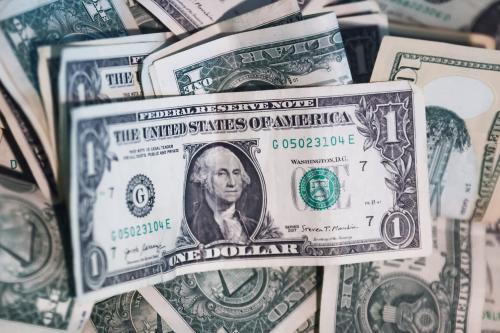Barack Obama’s triumphant presidential campaign in the 2008 election attracted extraordinary interest and excitement in the United States and around the globe. Following on the heels of sweeping Democratic gains in 2006, this second Democratic victory was driven by a sharply negative referendum on an unpopular war and a ravaged economy, but also by a rejection of business as usual in public life: excessive partisanship, ideological rigidity, a constitutional system out of balance, a culture of corruption and administrative incompetence. Most importantly, the 2008 election outcomes heightened expectations for dramatic improvements in the conduct of American politics and governance and in the quality and timeliness of its public policy decisions. Meeting these public expectations poses a daunting challenge for the new president, even with the opportunities provided by the crisis in the financial markets and the serious recession.
The president cannot produce these results on his own; Congress must play a central role in the restoration of a healthy and productive democracy in America. Yet too often in recent years Congress has been the setting, if not entirely the source, of dysfunction. In the summer of 2006, two of us published The Broken Branch, which argued that Congress had failed to exercise its duties as the first branch of government – to engage in responsible and deliberative lawmaking, police the ethical behavior of its members, and check and balance the other branches. We traced the demise of Congress over nearly two decades, from the latter part of the forty-year Democratic House to the unified Republican government under President George W. Bush. This decline included a loss of institutional patriotism among its members, an abdication of constitutional responsibility vis-à-vis the executive, the demise of regular order (in committee, on the floor and in conference), and the consequent deterioration of the deliberative process – the signature comparative advantage of Congress as a legislative body. A fervent belief that noble and necessary legislative ends justified any political means abetted a culture of corruption, an explosion of earmarks, and a triumph of party and ideology over institution.
These developments had serious consequences for policy and governance. The absence of institutional regard among its leaders diminished Congress in the constitutional scheme and encouraged more unilateral and less responsible behavior by the executive. The failure of Congress to insist on more information from the executive translated into less effective congressional oversight of such crucially important matters as the war in Iraq and homeland security. The suspension of regular order in Congress created greater opportunities for parochial, special-interest provisions to be added to legislation out of public view and for poorly constructed laws to get enacted without being properly vetted and corrected. The failure to discern and make explicit the true costs of important policy initiatives – from tax cuts to the Medicare to the war in Iraq – made it impossible to do a realistic cost-benefit analysis before they were approved. And the sharply partisan strategies and tactics embraced by the unified Republican government further poisoned public discourse and undercut public trust in the political system.
These patterns of dysfunctional behavior in Congress and the other branches of government are at least partly natural and understandable responses to powerful forces in the political and social environment. This is a strikingly partisan era characterized by two strong and ideologically polarized parties with consistently narrow margins in both houses of Congress. These features of the party system are evident among elected officials in government and within the electorate. They are reinforced and strengthened by teams of aligned activists, interest groups, community organizations and media outlets. This environment encourages an intense struggle for control of government and an unabashed manipulation of electoral and governing institutions to achieve political and policy goals.
Major change within Congress is, therefore, most likely to originate outside Congress. That argument was put to the test by American voters on Nov. 7, 2006. By deposing Republican majorities in the House and Senate in as decisive a midterm vote for change as one can imagine on our uncompetitive electoral terrain, an angry electorate created a necessary condition for revitalizing the first branch of government and restoring some semblance of balance among the central political institutions of American democracy.
Shortly after the midterm elections, we launched the “Mending the Broken Branch” project to track and assess the performance of Congress under its new Democratic majority. Although deep partisan differences, narrow majorities, the routine partisan use of the Senate filibuster and Republican George W. Bush in the White House were bound to limit what the Democratic majority could accomplish, Democratic leaders were in a position to deliver on some of their campaign promises relating to the operations of the Congress. Divided-party government was actually conducive to reviving congressional oversight of the executive. Democrats had the political incentive and ability to use committees in both chambers to scrutinize the performance of administration officials and the implementation of policies and programs. They could challenge what they considered unjustified assertions of executive power and excessive use of presidential signing statements. In the majoritarian House of Representatives, Democrats had leverage their Senate counterparts lacked; they could, with a simple majority, use chamber rules to toughen ethics standards and enforcement mechanisms. House and Senate Democratic leaders could put Congress back to work by setting a longer and more intensive schedule in Washington. And House Democratic leaders could loosen restrictions on minority participation in the legislative process and restore a serious deliberative role for standing and conference committees.
One year ago we issued a report evaluating the first session of the 110th Congress. We compiled statistics on how Congress spent its time; what it achieved; and how the legislative process operated relative to the 109th Congress under unified Republican government and to the more comparable situation of the 104th Congress following the 1994 election, when a new Republican majority in both houses took office under a Democratic president. This report extends our analysis to the full, two-year 110th Congress. The chart below assesses legislative activity, achievements and process for the four congresses that bracketed the 1994 and 2006 elections. A discussion of what these measures reveal about congressional performance is followed by a more extended treatment of whether and how Congress reasserted its rightful powers vis-à-vis the executive, efforts to counter the culture of corruption through ethics, earmarks and lobbying reform, and the effectiveness of Congress in anticipating and responding to the financial crisis of 2007 and 2008. We conclude by looking ahead to the 111th Congress and what it will take to overcome the shortcomings of the 110th, deliver on President-elect Barack Obama’s promises regarding policy and process, and restore the responsibilities and comparative advantages of the first branch of government.
The Brookings Institution is committed to quality, independence, and impact.
We are supported by a diverse array of funders. In line with our values and policies, each Brookings publication represents the sole views of its author(s).






